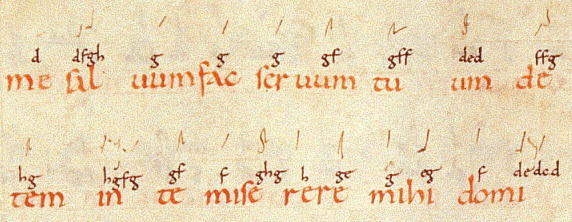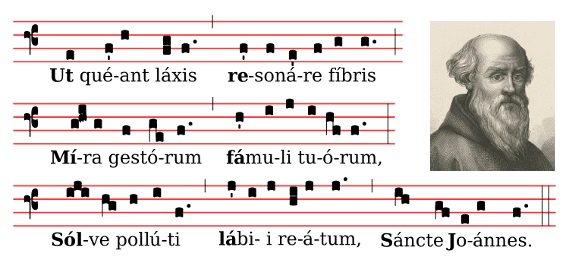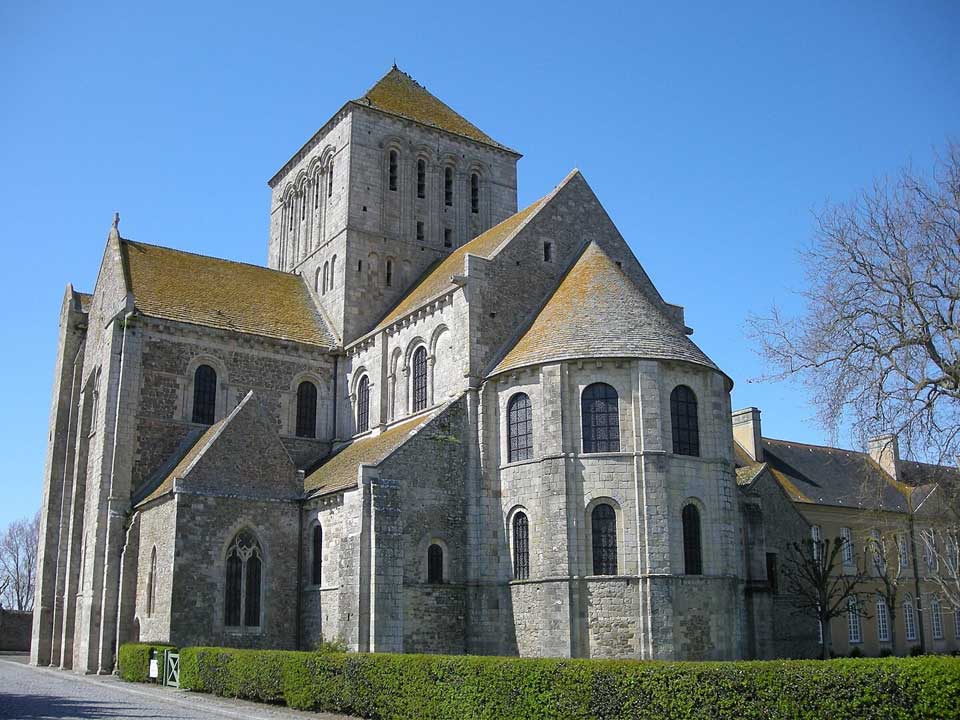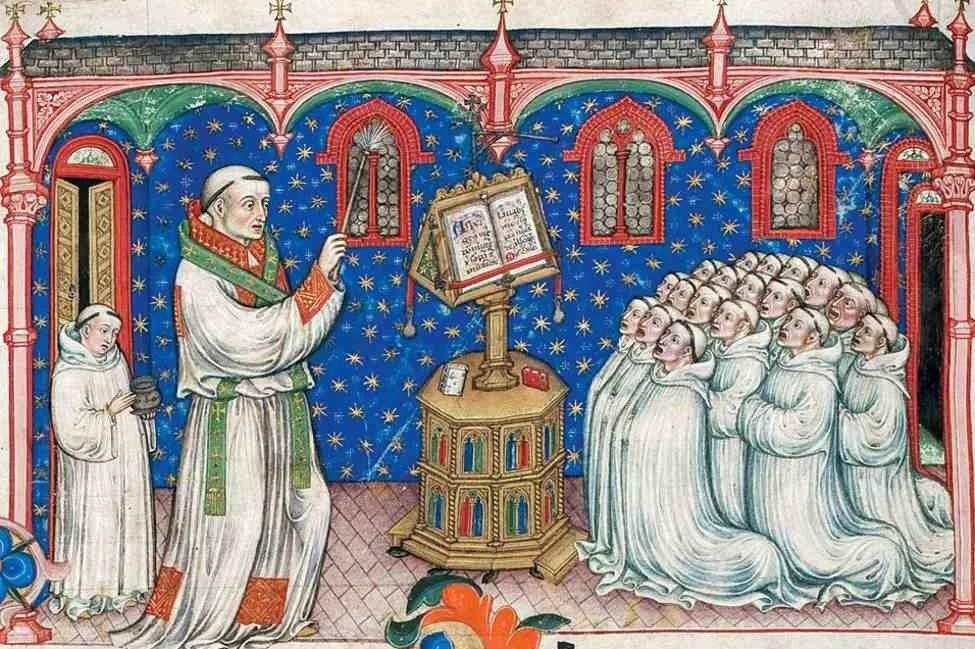Neumes
Gregorian chant was originally music transmitted orally, but various methods of writing down notes and melodies were soon invented throughout Europe. If the music wasn’t written accurately, the content would change little by little. It’s like the Telephone Game: a classic party game where a message is passed along by whispering it into the ear of the next person. The message often gets distorted as it’s passed along, leading to humorous results when the final recipient reveals what they heard. I’m sure there were some monks who were a little tone-deaf.

In order to transmit the melody correctly, various “codes” were created. These are called neumes.
- The neumes are placed on top of the lyrics and roughly represent the pitch, melody, accents, etc.
- They indicate the general shape and direction of a melody, indicating whether a melody rises, falls, or repeats, often representing groups of notes sung on a single syllable.
- Neumes, especially early ones, didn’t always specify exact pitches or rhythms, relying on oral tradition for interpretation.
- Over time, neumes evolved, with some becoming more precise in indicating pitch and rhythm, eventually leading to the development of modern staff notation.

Guido d’Arezzo (992-1050)
In 1020, Guido d’Arezzo (Italy) invented the musical notation we still use today. This is more accurate than previous neumes. At first, it only had four lines instead of five. The shape of the notes is also slightly different from today, but it is basically the same as modern musical notation.
He also invented the solmization (Do-Re-Mi), which can be seen in the image above. If you look at the lyrics of the hymn “Ut queant laxis,” each line begins with Ut-re-mi-fa-sol-la-Si.
Organum 700-900
As we have seen before Gregorian chant music is monophonic (single melody).
However, from the year 700 onwards, music gradually changed towards polyphony.
This is a very important event in the history of music and Organum represents a crucial step in the development of polyphony.
Organum is a form of early polyphony that layers a new melodic line (vox organalis) under a pre-existing Gregorian chant (vox principalis).
Organum was originally improvised; while one singer performed the notated melody (vox principalis),
another singer—singing “by ear”—provided the unnotated second melody (vox organalis).
Initially, this involved parallel motion also called “parallel organum“, a fourth or fifth below.
Both voices sing the same lyrics and roughly the same rhythm, but from 1100, the rhythm of the voices became increasingly freer and it evolved to include more independent melodic lines and diverse rhythmic and harmonic structures.
Organum style is called heterophony because the voices are not yet independent of each other .
- Monophony (one voice) – Gregorian Chant
- Heterophony (two> voices perform the same melody, but with slight, independent variations)
- Polyphony (multiple independent voices)
Cantus Firmus
We’ve just talked about two voices; a upper voice and a lower voice.
Originally the upper voice sang the Gregorian chant (vox principalis), and the lower voice sang a fourth or fifth lower (vox organalis).
However, from 1100 onwards, this was reversed:
the accompanying melodies became richer, more beautiful and artistic, so it would have sounded unnatural to place this new, beautiful melody at the bottom. Therefore, composers decided to sing this melody at the top.
The original melody (Gregorian chant) went to the bottom, and from then on it was called Cantus Firmus.
In other words: the voice of the Bible (God) was at the bottom, and the new, free voices were at the top.
The tenor (below) sings the plain chant. This was originally a Gregorian chant melody.
For many people, this part is the most important: it’s the part where God speaks.
The melody of this plain melody remains the same, but the accompaniment is composed to become increasingly more beautiful.
Some people were a little troubled by the fact that the part above “God’s voice” became more beautiful.
They were opposed to the idea of the accompaniment becoming more beautiful than God’s voice, saying, “It’s disrespectful to God…I can’t hear what God is saying.”
Architecture and Art
The architecture and art style of this period is called “Romanesque.”
Even today, many Romanesque buildings, churches, and monasteries can be found throughout Europe.
The style features thick walls, small windows, and semicircular arch doors.
This style precedes Gothic architecture (Notre Dame Cathedral in Paris: 1163).


